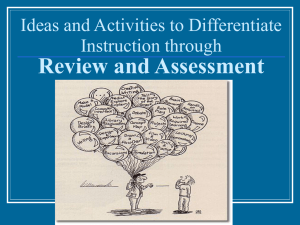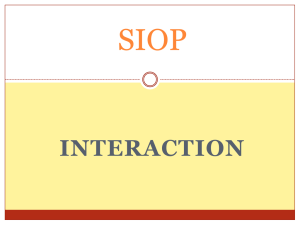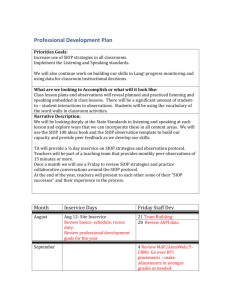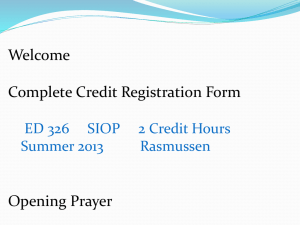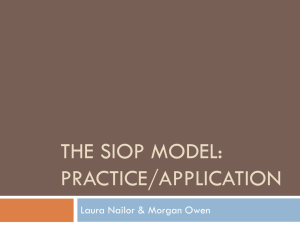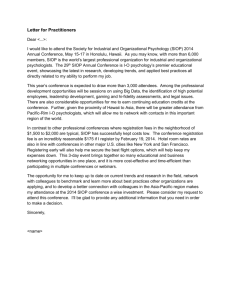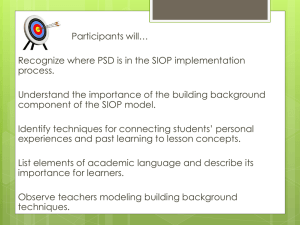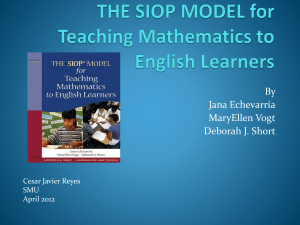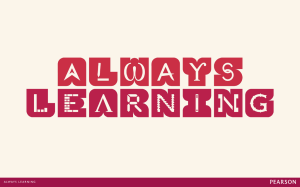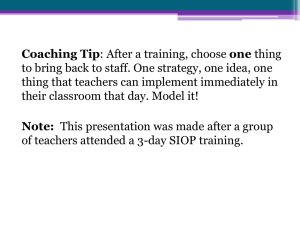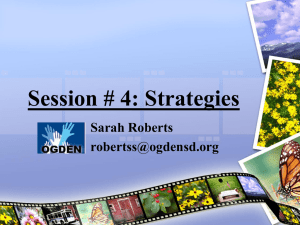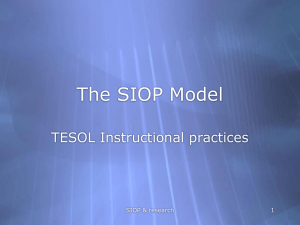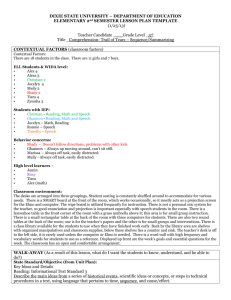2. SIOP_Building Background
advertisement
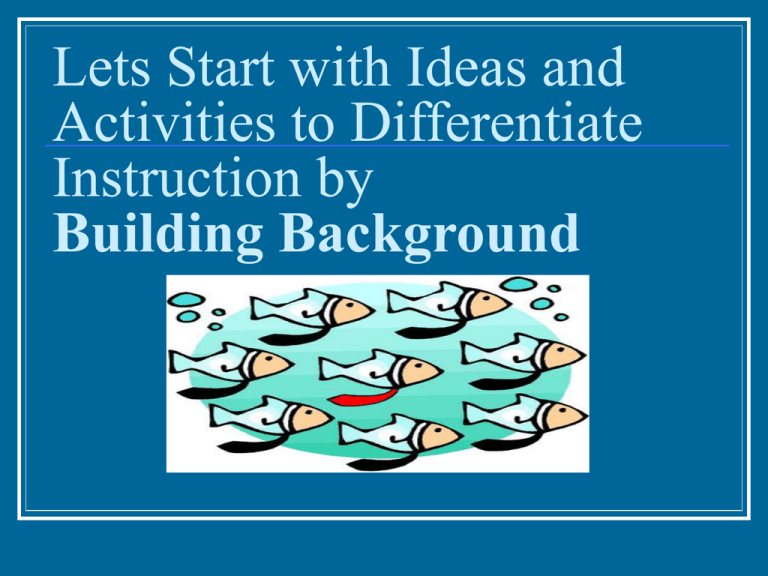
Lets Start with Ideas and Activities to Differentiate Instruction by Building Background Identifying Levels of Language Acquisition. Beginning (Pre-Production) Beginning (Early Production) Beginning (Early Speech Emergence) Intermediate (Early) Intermediate Early Advanced Advanced Examples of Divergent Responses Beginning : “Brown Bear” Early Intermediate: “The bear is brown. It has claws.” Intermediate: “The bear has thick fur and sharp claws. Early Advanced: “The bear isn’t a predator even though it has sharp claws and teeth.” Advanced: “Before they hibernate for the winter, brown bears give birth to cubs” (California Literature Project) Reading Across the Content Areas One of the most persistent findings in reading research is that the extent of students’ vocabulary knowledge relates strongly to their reading comprehension and to their overall academic success. Is It Worth It? An average student learns about 3000 words per year. For students who learn only 1000 words per year, an additional gain of 300 words equals a 30% increase for that year. THIS IS SIGNIFICANT, ESPECIALLY IF REPEATED YEAR AFTER YEAR. Building Background Features Concepts explicitly linked to students’ background experiences (SIOP Feature 7) Links explicitly made between past learning and new concepts (SIOP Feature 8) Key vocabulary emphasized (e.g., introduced, written, repeated, and highlighted for students to see) (SIOP Feature 9) The Influence of Background Knowledge Martin had a funny feeling in the pit of his stomach. As he walked down the alley, he thought of his younger brother who had recently died. What did the future hold for him? He contemplated his living situation and the people around him. If only he could predict the future, he would know more clearly what he should do today. Go around the room and find a partner for each category who is not in your grade level team. Reggae Latin Jazz Concepts Specifically Linked to Students’ Background Experience Teach Vocabulary as a pre-reading step Provide Experiences Introduce a Conceptual framework that will enable students to develop appropriate background information. SIOP 7 Most reading material, such as content area texts, relies on an assumption of common prior knowledge and experience. Teach Vocabulary as a prereading step SIOP 7 Provide Experience Read a story, article, play, or picture book about the topic. View a video related to the topic SIOP 7 Introduce a Conceptual Framework Pretest With a Partner SIOP 7 Find Your Reggae Partner Figure out and write down as many different ways to link student background to concepts in your classroom with lessons that you already teach. Go Back To Your Grade-Level Teams As a team share the ideas that you and your Reggae partner came up with and identify three strategies as a team that you can use to Build Background for your students. Links Explicitly Made Between Past Learning and New Concept Build bridges between previous lessons because students do not automatically make the connections. SIOP 8 Linking Experience “Who remembers what we learned about__?” Preserving and referring to outlines, charts, graphs, maps, word banks, graphic organizers. SIOP 8 Go Find Your Jazz Partner Brainstorm strategies for linking past learning and new concepts that you can use in your classroom with lessons that you have already taught or are going to teach. Now Go Back to Your Teams As a team share the ideas that you and your Jazz partner came up with and identify three strategies that your team can use to can use to link past learning with new concepts specific to your curriculum and specific to your team. Key Vocabulary Emphasized (e.g., introduced, written, repeated, and highlighted for students to see) Vocabulary development, critical for English learners is strongly related to academic achievement. Key Vocabulary is more than just the key content vocabulary. SIOP 9 Academic Vocabulary Academic Language For ______________ (Topic) Content words Process/Function Words Words and Word Parts that Teach English Structure SIOP 9 4 Principles Should Guide Vocabulary Instruction Students should be active in developing their understanding of words and ways to learn them Students should personalize word learning Students should be immersed in words Students should build on multiple sources of information to learn words through repeated exposure SIOP 9 Students should be active in developing their understanding of words and ways to learn them. Semantic Mapping Word Sort Contextualizing Key Vocabulary Concept Definition Maps Strategies for Independent Word Learning SIOP 9 Students should personalize word learning Vocabulary Self-Collection Strategy Mnemonic Strategies Personal dictionaries SIOP 9 Students should be immersed in words by rich language environments Word Walls Personal Word Study Notebooks and Dictionaries Comparing/Contrasting Words with the same morphemic elements (e.g., photograph, photosynthesis, photogenic) aid students in recognizing and using workds around them. SIOP 9 Students should build on multiple sources of information to learn words through repeated exposure Letting students see and hear new words more than once and drawing on multiple sources of meaning are important for vocabulary development. SIOP 9 Go Find Your Latin Partner Brainstorm strategies for emphasizing key vocabulary in a lesson that you have already taught or are going to teach. Now Go Back To Your Teams Come up with five strategies to help emphasize key vocabulary that is important to your curriculum as a team. Building Cultural Awareness & Respect “People don’t learn respect by celebrating Cinco de Mayo and eating tacos. People learn to respect one another by working together.” (Bruce Baron, 1985) Thanks for being so attentive! Please fill out an exit slip for me telling me the two most interesting things you learned during this class and …
